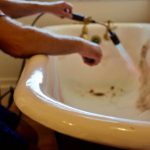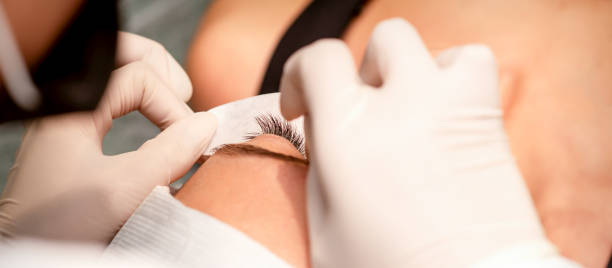Fresh, floral, and a little bit different in every town—that’s the charm of local honey. Yet when you’re ready to pick up a jar, the choices can feel scattered. Markets open on weekends, farm stands pop up seasonally, and online listings mix national brands with neighborhood beekeepers. So, where do you start? This guide keeps things simple. First, you’ll get a quick answer for busy shoppers. Then, you’ll find a deeper, step-by-step plan for comparing sources, checking labels, and matching flavors to how you cook. Because buying local should feel easy—and taste great.
You’ll also learn how to spot real raw honey, avoid vague labels, and understand seasonal varieties without guesswork. Moreover, we’ll cover prices, container sizes, and storage so you buy the right amount and use every spoonful. For those asking where can I buy local honey, you’ll see exactly which places to try first, how to contact small producers, and when to shop for the best selection. Finally, we’ll share a 20-minute “local honey hunt” you can run today. Ready to find a jar that truly comes from around the corner? Let’s map out your options and make your next purchase sweet, simple, and local.
Quick Answer: Where Can I Buy Local Honey?
In short, it includes farmers’ markets, roadside farm stands, beekeeper co-ops, food co-ops, natural grocers, specialty shops, CSA add-ons, and local beekeeper websites or social listings. Ask sellers for the harvest location, whether raw/unfiltered, floral source, or current-season varieties; then compare prices by jar size.
Why Buy Local
Here are some reasons why we should go for local purchase of honey:
Flavor & Terroir
Local honey tastes like where you live. Clover, wildflower, orange blossom, buckwheat blooms impart distinct color, aroma, and depth. Even two jars from towns ten miles apart can pour and taste differently because soil, rain, and flora shift the nectar profile. Therefore, buying nearby lets you explore real “terroir” in a spoon. Moreover, you can talk to the beekeeper about which flavors the apiaries produced this month. If you’ve asked yourself where can I buy local honey that truly reflects my region, start with places where you can meet producers: a farmers’ market table, a co-op shelf with farm cards, or a small shop that lists each jar’s source.
Freshness & Minimal Processing
Because local jars move fewer miles, they typically reach shelves sooner after extraction. That often means brighter aromatics and more nuanced flavors. Many small producers also use minimal heat and light filtration—enough to remove large wax bits while protecting texture and character. As a result, you often see tiny pollen specks and a natural cloudiness that signals less handling, not poor quality. Honey may crystallize over time—especially raw, minimally filtered batches—but that’s normal. Warm the sealed jar gently in a bowl of warm water to re-liquefy. Store it cool, dark, and dry, and keep lids tight to preserve those neighborhood notes.
Supporting Bees & Small Producers
Buying local keeps your money circulating in nearby farms and small businesses. Consequently, it helps beekeepers maintain equipment, expand apiaries responsibly, and keep hives on diverse, flower-rich sites that benefit community landscapes. You also gain traceability: you can ask about harvest dates, forage sources, and seasonal availability instead of guessing at anonymous blends. Furthermore, many producers will refill clean glass, offer bulk pricing during peak flow, or set aside popular varietals if you preorder. That relationship matters. It builds transparency, rewards ethical practices, and encourages thoughtful stewardship—so your pantry gets better honey, and your area keeps skilled beekeepers doing what they do best.
Best Places to Buy
Below are the places where you can buy honey easily.
Farmers’ Markets
If you want freshness and real conversations, start here. Markets gather multiple small producers so that you can sample, compare, and ask questions in one loop. First, check your city’s market calendar; then arrive early, because lighter varietals often sell out fast. Ask where the hives are located, when the jar was harvested, and whether it’s raw or lightly strained. Moreover, many beekeepers offer comb, creamed honey, and seasonal flights you won’t see in stores. Bring cash, though most now take cards. For bargain seekers, buy larger jars near closing—vendors prefer selling out. If you came wondering midweek, where can I buy local honey without guessing, markets give you the straightest line to the source, plus you’ll learn which flavors peak each season.
Roadside Farm Stands & U-Pick Orchards
Roadside stands feel informal, yet they’re often incredibly local. Because farms host hives for pollination, they’ll stock jars from on-site beekeepers or neighbors. Use Google Maps and look for signs near orchard clusters during Bloom and harvest. Additionally, U-pick spots sometimes bundle honey with fruit boxes or gift packs, which makes sampling easy. Stands are usually self-serve, so bring small bills and a bag to prevent sticky surprises in the car. Check for a farm name, town, and harvest season on the label; ask inside the barn store if details are missing. Although the selection is smaller than a market’s, the terroir is unmistakable. Therefore, if you want a jar from just down the lane, this stop belongs on your weekend route.
Direct from Beekeepers (Websites, Socials, Pop-ups)
Buying direct gives you transparency and first dibs on limited runs. Search Instagram and Facebook for your town + “honey” or “apiary,” then skim recent posts and stories for pickup windows and pop-up dates. Moreover, many beekeepers run simple Shopify pages or take preorders by DM. You’ll often see varietals tied to specific yards—backyard basswood, Creekside wildflower, late-season goldenrod. Ask how they handle crystallization and whether they offer jar returns or bulk pails. Because you’re skipping middle layers, prices can be friendlier for larger sizes. Still, be flexible: small producers sell out fast after good press or peak bloom. If you keep asking friends where can I buy local honey with real origin info, direct channels usually answer best.
Food Co-ops & Buying Clubs
Co-ops curate local food with a member-first lens. Join, and you’ll often see shelf tags that name the beekeeper, the town, and Bloom. As a result, it’s easy to compare sources without detective work. Bulk options may appear seasonally—perfect for bakers or tea lovers. Ask the buyer which deliveries are most frequent and when fresh cases arrive.
Additionally, co-ops host meet-the-producer nights, so you can taste side-by-side and learn pairing tips. Prices run mid-range, yet member discounts help. Although selection isn’t as broad as a farmers’ market, the vetting is strong, and quality stays consistent. If your area lacks weekend markets, a co-op offers a steady, reliable aisle where local jars rotate in step with the seasons.
Natural/Organic Grocers
Natural grocers balance convenience with vetted sourcing. Look for shelf tags that list a county or radius; many chains highlight “local” within 150–250 miles. Still, read carefully— “packed in” doesn’t mean produced nearby. Furthermore, store staff can check vendor notes and call the distributor if a label seems vague. Expect steady staples like wildflower and clover, plus seasonal one-offs from featured beekeepers. Prices run higher than farm stands, yet hours and locations are hard to beat. For better value, buy 24–32 oz jars or watch for loyalty promos. If you’re thinking in the middle of a busy Tuesday, where can I buy local honey after work? A natural grocer usually has a credible option you can grab quickly.
Specialty & Gourmet Shops
Cheese shops, gourmet grocers, and bottle boutiques love pairing honey with boards, teas, and craft breads. Consequently, they seek unique jars—buckwheat, sourwood, fireweed, or chunk honey dripping with comb. Staff can suggest cheese pairings and explain flavor notes, which helps you choose confidently. Although prices skew premium, portions are small enough for tasting flights and gifts. Ask whether the shop partners with a nearby apiary or buys from regional distributors; then request a harvest season to match your use. Additionally, many shops run tasting sessions on weekends. If you’re building a gift basket or hunting a specific floral profile, specialty stores often become your shortcut to distinct, conversation-starting jars you won’t stumble upon at big retailers.
CSA Boxes & Add-Ons
Community Supported Agriculture isn’t only for produce. Many farms let you add honey to weekly boxes, especially when they host hives. Moreover, CSA managers know exactly which beekeeper supplied the jars and when they were spun, so traceability is easy. Sign up for newsletters and check the add-on catalog weekly; quantities can be limited. Prices are usually fair, and pickup is simple—your honey rides home with your greens. Ask whether comb, creamed, or flavored infusions appear later in the season. Because CSAs operate rain or shine, you’ll get reliable access even as markets close for winter. If you’re already committed to eating local, adding honey to your box is a seamless way to support bees and neighboring producers.
Local Gift Shops/Tourist Centers
Visitor centers and indie gift shops love stocking area-made goods, including honey labeled with town names and map-friendly tags. This is ideal for travelers who want edible souvenirs that come from the area. However, selection can be curated toward smaller jars and gift sets. Check the label for “produced in” rather than “distributed by,” and ask staff which vendor is truly local. Furthermore, these spots often feature collaboration items—honey with local chili flakes or herb sprigs. While prices reflect tourist-friendly packaging, freshness is solid when turnover is high. In shoulder seasons, call ahead to confirm stock. For quick gifts that still support the neighborhood, these shelves deliver simple, pre-wrapped options you can hand over the same day.
Community Events & Fairs
County fairs, harvest festivals, and holiday bazaars gather small vendors under one roof, which makes sampling efficient. You’ll meet hobbyists alongside seasoned apiaries, so ask about hive locations, bloom windows, and how they handle moisture testing. Additionally, many events host honey competitions with ribbons; winning jars sell fast, so arrive early. Bring a tote and some cash for speed. Because vendors rotate by day, check the event schedule online and plan your circuit. If you’re still mulling mid-paragraph, where can I buy local honey while hearing the beekeeper’s story? Fairs deliver that face-to-face moment. Prices range widely, yet you’ll often find limited micro-batches—perfect for gifting, tastings, or building a home “flight” of local flavors.
Online “Near Me” Directories (How to Filter for Local)
Search engines and maps help if you filter wisely. Start with your town + “apiary,” “honey farm,” or “beekeeper,” then open map results and read recent reviews for sourcing clues. Next, switch to the Images or Social tabs to verify that jars show local towns on the label. Moreover, visit producer websites and look for an “Our Hives” or “Where We Keep Bees” page. Avoid listings that only say “packed in USA” with no origin. Message sellers to confirm harvest county and season before you drive. Finally, track pickup hours and cash policies. When schedules clash and you ask yourself, Where can I buy local honey tonight, these filters point you to real jars nearby rather than generic blends.
Quick Comparison Table
| Place | How to Find | Price Range | Best For |
| Farmers’ Market | City market calendar | $$ | Variety + speaking to beekeepers |
| Farm Stand | Google/Maps + signs | $–$$ | Fresh, ultra-local jars |
| Co-op | Membership site | $$ | Bulk + seasonal picks |
| Natural Grocer | Store locator | $$–$$$ | Convenience + verified sourcing |
Seasonal Varieties & What to Expect
Local honey changes with the bloom calendar, so flavors shift as the seasons pass. Early spring jars often taste light and delicate; late-summer or fall harvests lean darker and bolder. Because nectar sources vary by region and rainfall, your market may offer different varietals year to year. However, you can still use a simple “color = flavor” rule of thumb: lighter usually means milder; darker often means deeper, maltier notes. Moreover, some jars are blended “wildflower,” which captures whatever was blooming nearby—great for a true snapshot of the place.
Ask vendors what’s blooming now, when the jar was harvested, and whether it’s a single-flower varietal or a local blend. Then match flavors to how you cook: light honeys for tea and fruit, medium for vinaigrettes and baking, and dark for marinades and cheese boards. Finally, remember that color isn’t quality by itself; it’s just a clue to taste.
Tiny Varietal Guide (Windows Vary by Region):
| Varietal | Usual Bloom Window* | Color | Flavor Notes |
| Wildflower | Spring–Fall | Varies | Floral, balanced, variable |
| Clover | Late Spring–Summer | Light | Mild, clean, vanilla hint |
| Orange Blossom | Spring | Light | Citrus blossom, perfumed |
| Buckwheat | Late Summer–Fall | Dark | Bold, malty, molasses |
| Linden/Basswood | Early Summer | Medium | Minty-floral, bright |
| Blackberry | Early–Mid Summer | Medium | Berry-floral, gentle |
*Expect shifts based on weather and local microclimates.
Price & Packaging Guide
Prices reflect what’s inside the jar and how it got there. Small-batch producers work at a different scale than national brands, so, naturally, costs can be higher—but the flavor and traceability often are, too. If you’re comparing options and quietly typing where can I buy local honey on your phone, use these pointers to set expectations.
Typical Sizes & Styles
- Jar sizes: 8 oz (great for sampling), 12 oz., and 16 oz. (everyday pantry), 24–32 oz. (frequent use or baking).
- Liquid honey: Clear, pourable, easy for tea and dressings.
- Creamed/whipped honey: Smooth, spreadable; fantastic on toast and biscuits.
- Comb honey: Honey is still in the wax comb, and it is gorgeous on cheese boards and gifts.
What Affects Price
- Varietal & rarity: Orange blossom or buckwheat can cost more than a local wildflower blend.
- Season & yield: Droughts, long rains, or poor Bloom reduce nectar and increase prices.
- Processing & packaging: Glass jars, comb sections, and careful low-heat handling add cost.
- Scale & labor: Backyard or small commercial beekeepers hand-bottle, label, and sell—time you can taste.
- Distance & certification: Truly local, market-stall jars with verified origin often command a premium.
Pro Tip: Buy a small jar first, then step up to a quart once you know you’ll use it.
Storage, Safety & Use
Honey keeps for a very long time when you store it well. Because it’s naturally low in moisture and acidic, it resists spoilage; however, you should keep the lid tightly sealed and the jar in a cool, dark cabinet. Avoid damp areas and direct sunlight, which can alter flavor over time. If your honey crystallizes (grainy or firm), don’t worry. Warm it gently: set the sealed jar in a bowl of warm—not boiling—water and stir occasionally until it returns to liquid. Instead of microwaving, use the water-bath method to protect aroma and enzymes.
Important Safety Note: Never give honey to infants under 1 year.
Now, let’s use that jar:
- Tea & coffee: stir in just after brewing for smoother sweetness.
- Toast & biscuits: try creamed honey for no-drip spreads.
- Marinades & glazes: dark honeys shine on salmon, chicken, or roasted carrots.
- Vinaigrettes: whisk with lemon, mustard, and olive oil.
- Cheese pairings: wildflower with goat cheese; buckwheat with blue or aged cheddar.
- Yogurt & granola: drizzle, then add fruit and nuts for texture.
Finally, buy sizes you’ll finish in a few months; freshness rewards steady, everyday use.
Support Your Local Beekeeper
When you buy from the person who tends the hives, you get better answers—and often better honey. Moreover, thoughtful questions help producers plan, so you’ll hear about limited runs first. When your curiosity goes beyond simply asking where can I buy local honey, you build relationships that pay off at harvest time.
Questions That Show You Care (And Get Better Honey)
- Where were these hives located this season (rough area or miles from the market)?
- What was blooming when this jar was harvested, and when did you bottle it?
- Is it raw or gently warmed? Is it filtered or just strained?
- Do you produce creamed or comb honey, and how often?
- Which varietal sells out first, and why?
- How should I store this specific jar?
How to Preorder Popular Varietals
Ask about the bloom calendar and subscribe to the beekeeper’s email or text list. Then, two to four weeks before a known bloom (e.g., linden or orange blossom), request a hold on your preferred size. Because small batches vanish fast, offer a deposit, confirm pickup (market day or farm gate), and specify jar count. Finally, set a reminder for harvest week; you’ll skip the “sold out” sign.
Returns, Jars, and Etiquette
- Jar returns: Many beekeepers appreciate clean glass; ask first.
- Issues: If a lid leaks or a jar ferments, contact them promptly, and most will replace it.
- Tastings: use sample sticks; never dip lids or fingers.
- Payment: Small producers may prefer cash or local payment apps.
- Reviews: post a quick note online—social proof helps their next season.
Respect the craft, show up on time, and you’ll be first in line for the best jars.
20-Minute “Local Honey Hunt” Plan
1) Search (5–6 minutes). Open Maps and type “local honey,” “beekeeper,” or “farm stand.” Then zoom to a 10–25-mile radius. Next, scan listings for words like “raw,” “unfiltered,” “wildflower,” or a town name on recent photos or posts.
2) Shortlist (4–5 minutes). Pick 3–4 nearby options with clear origin info, recent activity, and consistent hours. Moreover, check price photos for size (8 oz, 16 oz, 32 oz) to compare later—finally, note which ones sell the varietals you want.
3) Call/DM (6–7 minutes). Ask three quick questions: Where are the hives located? What was the harvest month? Is it raw/unfiltered? Additionally, confirm stock, payment types, and whether they offer samples or jar returns.
4) Buy (3–4 minutes). Choose the closest option with stock today. Still, bring cash as a backup and a tote for glass. After you buy, label the lid with the floral source and date. Therefore, you can compare flavors later and know when to reorder.
FAQs
Is “raw” the Same as “local”?
No. “Raw” usually means the honey hasn’t been heated beyond mild warming and hasn’t been finely filtered, so pollen and enzymes remain. “Local” refers to where the nectar was gathered and the honey was produced. Ideally, you can buy honey that is both raw and from nearby hives.
How Far Can “local” Be and Still Count?
There’s no single legal distance everywhere. However, many shoppers treat “local” as within their county or neighboring counties, roughly 25–100 miles. Ask for the town or region of the hives, not just where the jar was packed. In short, closer is better for seasonal flavor and transparency.
Why Does My Honey Crystallize?
Crystallization is natural. Glucose separates from water and forms tiny crystals, especially in cooler rooms or in honeys high in glucose (like clover). To re-liquefy, place the sealed jar in warm water (not boiling) and stir gently. As a result, flavor stays intact while texture smooths out.
What’s the Difference Between a Varietal and a Wildflower?
Varietal honey comes mainly from one floral source—like orange blossom or buckwheat—so flavor and color are more consistent. Wildflower is a mix of many blooms in a season and area, so it varies batch to batch. Therefore, varietal offers signature notes; wildflower offers a broader “taste of place.”
How Do I Verify a Beekeeper?
Start with specifics: ask where the hives sit, when the batch was harvested, and whether the honey is raw. Then check labels, photos of apiaries, market schedules, and recent posts. Moreover, local market managers or co-ops can vouch for recurring vendors with a track record and stable supply.
Can I Buy in Bulk or Wholesale Locally?
Often, yes. Many beekeepers sell gallons or food-service pails seasonally. However, supply can be limited after peak harvests, so ask about lead times. You may get price breaks for larger volumes, jar returns, or bringing your container. Still, confirm storage tips and crystallization expectations upfront.
Is Darker Honey Stronger?
Typically, darker honeys taste bolder and more robust because of mineral content and floral source—think buckwheat or forest honeys. Lighter honeys (like clover or acacia) are usually milder. However, “stronger” doesn’t mean sweeter. In fact, sweetness is similar; it’s the flavor intensity and aroma that shift.
What if My Area Has No Markets in Winter?
Buy directly from beekeepers who store harvests year-round, check food co-ops, or order from local producers online with pickup. Additionally, stock up in late summer or fall and keep jars sealed in a cool, dark place. Because honey keeps well, you can bridge the off-season easily.
Is Plastic or Glass Better?
Glass is inert, reusable, and great for long storage and flavor. Plastic is lighter, cheaper, and safer to carry to markets, yet it can scuff and isn’t ideal near heat. Therefore, choose glass for pantry storage and plastic for travel or squeezable convenience—always keep either container cool.
How Many Times a Year is Honey Harvested?
It depends on the climate and forage. Many temperate regions see one main harvest, though some areas have two or three flows tied to spring and summer blooms. Meanwhile, droughts or long rains can reduce yields. Ask producers about their seasonal pattern and which months bring your favorite varietals.
Wrap-Up
You don’t need a long search to find a jar that suits your taste and budget. Use the 20-minute plan, ask a few clear questions, and try one or two trusted sources. Soon, you’ll have a go-to beekeeper and a flavor you love. And if you’re still wondering, where can I buy local honey—the best answer is usually right down the road.

















Leave a comment